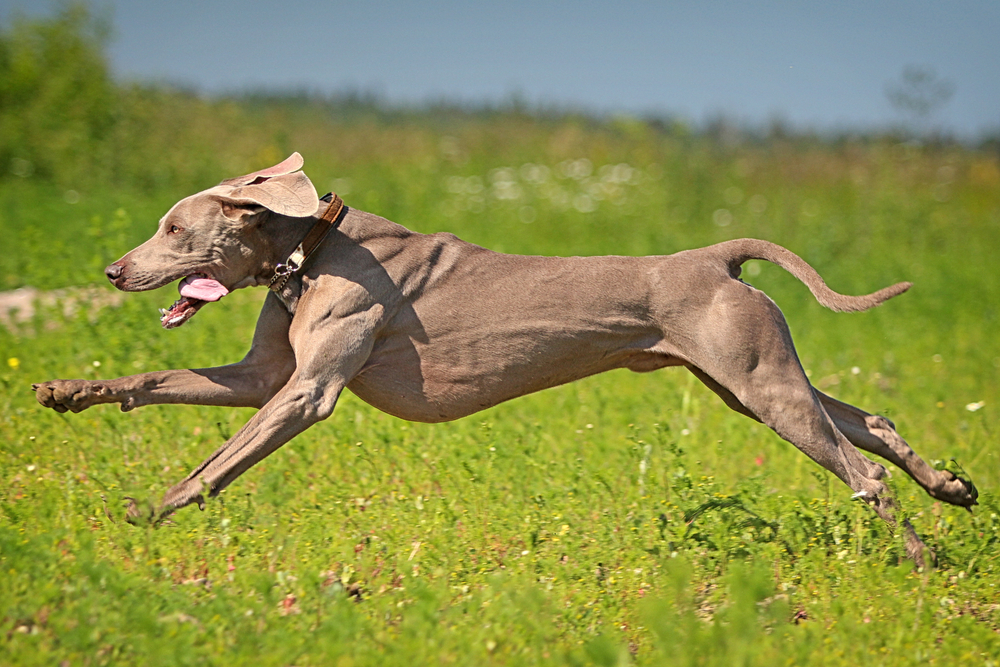Regarded as the breed standard, the Weimaraner has signature long faces, lobate-like soft ears, and an approximate 12:11 ratio of its body length and height. They are easily recognizable with a short, smooth coat that comes in different shades of gray. Weimaraner have a dark strip along the ridge and might have a short hair wool cover or a long, slightly wavy cover coat.
Weimaraners have beautiful amber or blue-grey eyes that emanate a look of kindness. They possess strong jaws and well-developed cheekbones with a long angular muzzle. In a word, the Weimaraner is a stunner with a gracefully curved neck, muscular back, well-formed thorax, and low-set tail.
Weimaraners are ideal for you who love active dog hunting, hiking, and the outdoors. As an affectionate pet, this dog is a true family member, is not aggressive, and loves children. That said, you need to keep it active to prevent destructive behavior since they struggle when left alone. Weimaraners make great companions and socialize well with other dogs but don’t tolerate cats.




















